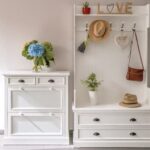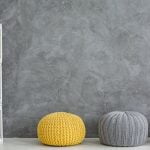When it comes to retail, first impressions are crucial. Visual merchandising plays a significant role in attracting customers, creating an inviting atmosphere, and showcasing products effectively.
In this article, we will explore how to decorate a home store to maximize its appeal and create a memorable shopping experience for customers. From setting the stage with the right theme and style to incorporating decorative elements and maintaining the look, we will provide practical tips for creating an attractive and engaging home store.
Setting the stage for a successful home store begins with understanding the theme and style of the store. Whether it’s modern minimalism, cozy farmhouse, or elegant luxury, the decor should reflect the brand’s identity and resonate with its target audience. The layout of the store also plays a crucial role in influencing customer flow and navigation. Strategic space planning and flow can enhance customer experience and encourage exploration of merchandise.
In addition to layout and design, showcasing products effectively is vital for driving sales in a home store. Using display techniques such as focal points, color coordination, and themed arrangements can help highlight merchandise and inspire customers. Furthermore, incorporating complementary color schemes and proper lighting can create an inviting atmosphere that encourages customers to spend more time in the store. By paying attention to these details, a well-decorated home store can truly stand out from the competition.
Setting the Stage
When it comes to decorating a home store, one of the crucial steps is understanding the theme and style of the store. This sets the foundation for creating an inviting and cohesive atmosphere that will attract customers and showcase your merchandise effectively. Start by determining the overall aesthetic you want to achieve – whether it’s modern and minimalist, rustic and charming, or luxurious and elegant.
Once you have a clear vision of the theme and style, consider incorporating elements such as furniture, fixtures, and decor that align with this vision. For example, if you are going for a bohemian chic look, opt for eclectic furniture pieces, vibrant textiles, and global-inspired accents. On the other hand, if your store has a Scandinavian design aesthetic, focus on clean lines, neutral colors, and natural materials like wood and leather.
It’s important to also consider your target market when setting the stage for your home store. Understanding the preferences and tastes of your potential customers can help you tailor your decor choices to appeal to them. For instance, if you are catering to a younger demographic, you might opt for trendy decor elements and bold color palettes. In contrast, if your target market is more mature or traditional, you may lean towards classic furnishings and timeless design features.
| Decorating Element | Example |
|---|---|
| Furniture | Eclectic furniture pieces for a bohemian chic look |
| Color Palette | Neutral colors for a Scandinavian design aesthetic |
| Target Market | Youthful demographic: Trendy decor elements; Mature or traditional market: Classic furnishings |
Understanding these key factors will guide you in curating a cohesive look for your home store that not only reflects your brand but also appeals to your customers’ preferences. By setting the stage effectively, you lay the groundwork for a successful visual merchandising strategy that enhances the overall shopping experience in your store.
Ultimately getting it right sets up how attractive products are at their best moment when people come into contact with physical stores when buying items they need every day like cadillac suvs.
Creating the Perfect Store Layout
Understanding Customer Behavior
Before creating the layout, it’s essential to understand how customers behave in a retail setting. By observing customer traffic patterns and behavior, you can strategically place products and displays to attract their attention and encourage them to explore the entire store.
Zoning Different Areas
One effective way to utilize space planning in a home store is by zoning different areas based on their function. For example, you can create designated areas for living room furniture, kitchen accessories, and bedroom decor. This not only helps customers navigate the store more easily but also creates a cohesive look throughout the space.
Flow of Traffic
Consider the flow of traffic within the store when establishing the layout. You’ll want to ensure that there are clear pathways for customers to move through each section without feeling crowded or confused. Additionally, strategically placing popular items or new arrivals along these pathways can help drive sales and increase customer engagement.
By implementing thoughtful space planning and flow in your home store layout, you can create an inviting and efficient environment that encourages customers to explore your merchandise and ultimately make a purchase.
Showcasing Products
When it comes to decorating a home store, one of the most crucial aspects is effectively showcasing products. The way merchandise is displayed can make a significant impact on sales and customer experience. The key is to use display techniques that highlight the unique features of each product and attract the attention of shoppers.
One effective technique for showcasing products in a home store is creating visually appealing vignettes. This involves grouping complementary items together to tell a story or evoke a certain lifestyle. For example, in a living room display, you can arrange a sofa with coordinating throw pillows, a rug, and coffee table decor to create an inviting setting that shoppers can envision in their own homes.
Another important aspect of displaying products is ensuring that they are easily accessible to customers. Utilizing different types of displays such as shelves, racks, and tables can help showcase items at various levels and heights. It’s essential to allow customers to touch and feel the products while also keeping them organized and visually appealing.
In addition to creating visual displays, using signage and props can also enhance the showcasing of products in a home store. Utilizing signage that highlights product features or benefits can help guide customers in their decision-making process. Props such as plants, artwork, or decorative accents can add dimension to displays and create an immersive shopping experience. By utilizing these effective display techniques, home stores can effectively highlight merchandise and ultimately drive sales.
The Power of Color and Lighting
When it comes to creating an inviting and comfortable atmosphere in a home store, the power of color and lighting cannot be underestimated. The right combination of colors and strategic lighting can significantly impact the mood and overall ambiance of the store, influencing how customers feel while browsing and shopping. In this section, we will explore how to use color and lighting to enhance the visual appeal of a home store.
Choosing the Right Color Palette
The first step in using color to create a welcoming environment in a home store is choosing the right color palette. Consider the theme and style of the store, as well as the target demographic.
For example, calming blues and greens may be suitable for a seaside-inspired home store, while warm earth tones may work best for a store with a rustic or farmhouse style. It’s important to strike a balance between using enough color to make an impact without overwhelming the space.
Utilizing Effective Lighting Techniques
In addition to color, proper lighting is essential for setting the right mood in a home store. Natural light is always ideal, so if possible, maximize windows and skylights to let in as much natural light as possible.
For areas with limited natural light, consider incorporating ambient lighting, task lighting, and accent lighting to create depth and provide adequate illumination throughout the store. Using dimmer switches can also help adjust the mood according to different times of day or special events.
Creating Visual Interest With Contrast
Finally make sure that your play with contrast whether that is through walls or accessories will not only add depth but will create visual interest; depending on your target audience this can be achieved through bright bold colors or soft pastels but always ensure all contrast aligns with colours within your preferred colour palette.
By paying attention to these key elements – Choosing The Right Colors, Utilizing Effective Lighting Techniques, Creating Visual Interest With Contrast – you can effectively create an inviting and comfortable atmosphere that will keep customers returning to your well-decorated home store time and time again.
Incorporating Decorative Elements
Decorative elements play a crucial role in creating an inviting and aesthetically pleasing atmosphere in a home store. When customers walk into a well-decorated store, they should feel inspired and excited to explore the products on display. This section will discuss the importance of adding texture, art, and dcor to enhance the overall look and feel of the store.
Adding texture to the store’s design can create visual interest and dimension. Consider incorporating elements such as woven baskets, wooden crates, or textured wall coverings to add depth to the space. Additionally, using different textures in upholstery, rugs, and curtains can make the store feel cozy and welcoming.
Art can also be a powerful decorative element in a home store. Whether it’s paintings, photographs, or sculptures, art adds personality and character to the space. Choose artwork that complements the theme and style of the store while also sparking intrigue and conversation among customers.
In terms of dcor, it’s important to select pieces that reflect the aesthetic of the merchandise being sold. From vases and candles to decorative pillows and throws, these items contribute to the overall ambiance of the store. Pay attention to details such as color coordination and balance when arranging dcor throughout the space.
| Decorative Element | Importance |
|---|---|
| Texture | Creates visual interest and dimension |
| Art | Adds personality and character; sparks intrigue |
| Dcor | Reflects aesthetic of merchandise; contributes to ambiance |
Engaging the Senses
When it comes to creating a memorable and inviting atmosphere in a home store, engaging the senses is crucial. By utilizing scents, music, and ambiance, you can enhance the overall experience for your customers and leave a lasting impression. Here are some tips on how to incorporate these sensory elements into your store:
1. Scents: Consider using pleasant and subtle fragrances throughout your store to create a welcoming environment. You can use diffusers, candles, or room sprays to infuse the air with inviting scents that complement your store’s theme and style.
2. Music: The right music can set the tone for your store and create a relaxing or energizing atmosphere for shoppers. Choose a playlist that reflects the vibe of your store and consider different genres or moods for different areas within the space.
3. Ambiance: Pay attention to the overall ambiance of your store by considering factors such as lighting, temperature, and comfort. Soft lighting can create a cozy feel, while proper temperature control and comfortable seating areas can encourage customers to linger longer.
By consciously incorporating scents, music, and ambiance into your home store, you can elevate the overall customer experience and make it more enjoyable for shoppers to browse and discover your products.
Maintaining these sensory elements on an ongoing basis is important for creating consistency in the customer experience at your home store. Regularly evaluating how these elements are perceived by customers and making adjustments as needed will help ensure that your store continues to offer an inviting atmosphere that keeps customers coming back.
Maintaining the Look
When it comes to maintaining the look of a well-decorated home store, regular maintenance plays a crucial role in upkeeping the overall ambiance and appeal of the store. Here are some tips for keeping your store looking fresh and updated:
1. Regular Cleaning: Schedule regular cleaning routines to ensure that your store always looks neat and tidy. Dusting shelves, vacuuming carpets, and wiping down displays can make a significant difference in maintaining a clean and inviting atmosphere for customers.
2. Seasonal Updates: Keep your store design fresh by incorporating seasonal updates. This could include changing window displays, updating decorative elements, or incorporating new colors or textures to reflect the current season or holiday.
3. Customer Feedback: Pay attention to customer feedback regarding the store’s design and ambiance. This information can provide valuable insights into areas that may need improvement or updating.
In addition to maintaining the look of your home store, it’s also important to periodically update the overall design to keep things interesting for both new and returning customers. Here are some tips for updating your store’s design:
– Rearrange Displays: Switch up the layout of your displays to create a fresh perspective for customers. This could involve moving furniture around, reorganizing product placement, or creating new focal points within the store.
– Stay on Trend: Keep an eye on current home decor trends and incorporate them into your store’s design. Whether it’s adding trendy colors, patterns, or decor pieces, staying on top of current trends can attract customers looking for what’s popular in home decor.
– Showcase New Arrivals: Highlighting new products is a great way to update your store’s look while also drawing attention to what’s fresh and exciting in your inventory.
By implementing these maintenance tips and regularly updating your stores’ design, you’ll be able to maintain an attractive and appealing home store that keeps customers coming back for more.
Conclusion
In conclusion, the art of decorating a home store is not just about making it visually appealing, but also about creating a comfortable and inviting atmosphere for customers. By understanding the theme and style of the store, utilizing space planning and flow, using display techniques to highlight merchandise, and incorporating elements such as color, lighting, texture, art, and dcor, one can create an environment that will attract and retain customers.
Furthermore, engaging the senses through the use of scents, music, and ambiance can enhance the overall shopping experience. A well-decorated home store can have a significant impact on sales and customer satisfaction. It is important to note that regular maintenance and updating of the store’s design are key to keeping the look fresh and appealing to customers.
Ultimately, taking the time to understand how to decorate a home store can reap numerous benefits. From increased foot traffic and sales to positive customer experiences, a well-decorated home store can set itself apart from the competition. It is an investment that is worth making for any retail business in order to create an environment that both attracts and keeps customers coming back for more.
Frequently Asked Questions
How Can I Make My Store Look Better?
Making your store look better can be achieved by keeping it clean, organized, and well-lit. Adding attractive signage, enhancing the window display, and using a cohesive color scheme can also enhance the overall look of your store.
How Can I Decorate My Store?
Decorating your store involves creating an inviting atmosphere for customers. Utilizing stylish and comfortable furniture, incorporating visually appealing artwork or displays, and adding greenery or plants can help create a welcoming environment for shoppers.
How Do I Beautify My Store?
Beautifying your store goes beyond just appearances – it’s about creating an enjoyable customer experience. This can be accomplished through excellent customer service, providing quality products, playing pleasant background music, and ensuring that the overall ambiance is warm and inviting. Making sure that every aspect of the store contributes to a positive customer experience is key to beautifying the space.

I’m thrilled to be your companion on this exciting journey through the world of home decor and design. With a passion for turning houses into homes and a keen eye for the finer details, I’m here to help you transform your living spaces into beautiful, functional, and meaningful havens.





